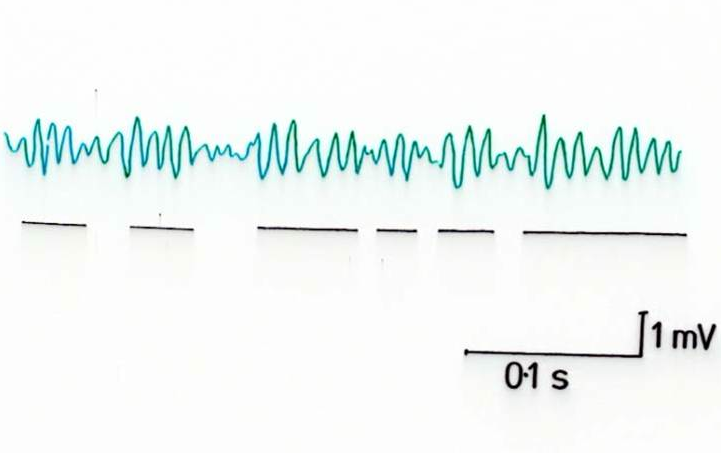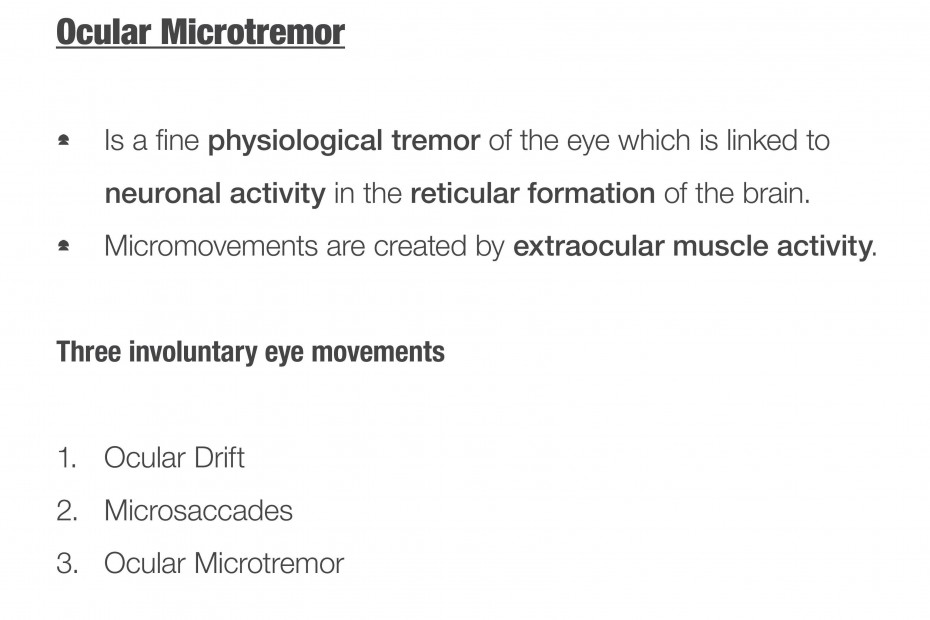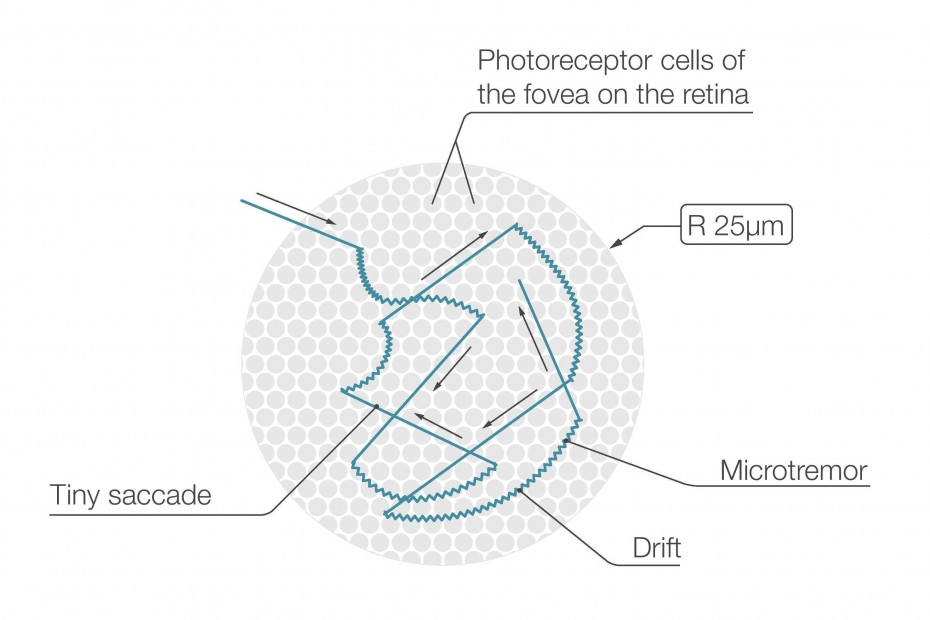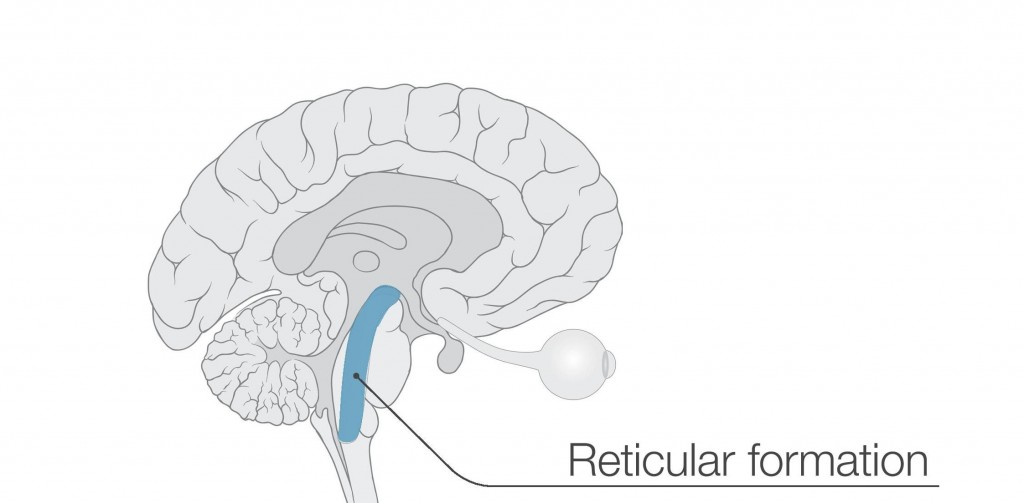Ocular Microtremor (OMT) Biology / Physiology

Ocular microtremor (OMT) is a high frequency, low amplitude physiological tremor of the eye that is a normal function in all individuals. OMT originates from the ocular neurons in the brainstem and has been shown to decrease in certain disease states affecting the brainstem. The OMT movement is irregular with the intermittent appearance of “bursts” that generally have a greater amplitude than the baseline signal.
Normal OMT activity in healthy adults has been measured at a mean peak frequency of 83.68 + 5.78 Hz (mean + SD). (Bolger, 0) There are seven parameters of OMT movement that have been shown to be of interest: frequency of baseline (Hz), percentage of reading at baseline (%), duration of baseline (msec), number of bursts per second, frequency of bursts (Hz), duration of bursts (msec) and overall OMT frequency (Hz). We measure overall mean peak frequency which is an accurate and reliable indicator of overall activity.


The Mean OMT frequency has been shown to drop in adults over 60 years of age (p<0.002) to an average frequency of 80.5 + 4.7 Hz. This may be due to a reduction in neural activity as a normal part of the aging process. Elderly persons may also have a decreased response to neuronal input based on histological changes in the extra-ocular muscle. (Bolger, 1)
The OMT activity is not dependent on sensory input and is an involuntary response. Circadian variability in OMT has been shown in healthy subjects and is believed to be a normal physiological process. (Bolger, 2)
OMT and Brain States
Ocular microtremor is similar to other physical neurogenic tremors. It originates in the brainstem and directly correlates with the level of neuronal activity in the brainstem and reticular activating system which is responsible for awakening, awareness, arousal and your autonomic functions.
Clinicians have shown that OMT signal patterns and strength vary with altered brain states. OMT frequencies and amplitudes decrease under death, coma, anesthesia and sleep. Certain patients with neurological conditions exhibit atypical OMT signal patterns. Therefore ocular microtremor holds tremendous promise as a specific diagnostic and monitoring parameter that will be applied in many clinical settings; essentially a new “brainstem vital sign”.
Reticular Activating System (RAS)

The reticular activating system (RAS) is a part of the mammalian brain located in the brain stem where the oculomotor nerve and ocular microtremor (OMT) originates. In human biology, it is believed to play a role in many important functions, including sleep and waking, behavioral motivation, breathing, and the beating of the heart. Trauma to this area can cause a coma, and it has been linked to several different medical conditions, including narcolepsy. Measuring OMT is seen to be a direct measure of RAS activity.
The functions of the reticular activating system:
- control of consciousness
- control of sleep, walking, sex, eating, and elimination
- control of autonomic functions


